A General Path Planning Algorithm with Soft Constraints for UAVs in High-Density and Large-Sized Obstacle Scenarios
Highlights
- An expanded space observer is designed to perform two observations, creating safe regions as UAVs approach obstacles of any shape from arbitrary orientations. Local target points are then generated within these regions to guide UAV flight paths.
- An improved Soft Differential Constrained Minimum Snap algorithm is developed, transforming endpoint differential terms (velocity, acceleration) from hard constraints into cooperatively optimized parameters with path coefficients.
- Through the directional guidance of local target points, combined with path memory points and backtracking algorithm, a general UAV path planning framework is proposed for high-density and large-sized obstacle scenarios.
- Soft constraints and self-regulation of path endpoint differential terms enhance their coupling with the parameters of the polynomial path equation, ultimately generating optimized trajectories that enable faster UAVs transit.
Abstract
1. Introduction
2. Methods
2.1. Local Target Searching Algorithm
2.1.1. Expanded Space Observer
2.1.2. TD3 Local Target Point Generation Algorithm
2.2. Path Optimization Algorithm
2.2.1. SDC-Minimum Snap
2.2.2. Path Memory Point Backtracking Algorithm
3. Results
3.1. Path Planning Simulation Experiments
3.2. Real-World Experiments
4. Discussion
5. Conclusions
Author Contributions
Funding
Data Availability Statement
Conflicts of Interest
References
- Qiu, J.; Liu, Q.; Qin, J.; Cheng, D.; Tian, Y.; Ma, Q. PE-Planner: A Performance-Enhanced Quadrotor Motion Planner for Autonomous Flight in Complex and Dynamic Environments. IEEE Robot. Autom. Lett. 2024, 9, 5879–5886. [Google Scholar] [CrossRef]
- Debnath, D.; Vanegas, F.; Sandino, J.; Hawary, A.F.; Gonzalez, F. A Review of UAV Path-Planning Algorithms and Obstacle Avoidance Methods for Remote Sensing Applications. Remote Sens. 2024, 16, 4019. [Google Scholar] [CrossRef]
- Lindqvist, B.; Patel, A.; Löfgren, K.; Nikolakopoulos, G. A Tree-Based Next-Best-Trajectory Method for 3-D UAV Exploration. IEEE Trans. Robot. 2024, 40, 3496–3513. [Google Scholar] [CrossRef]
- Wang, P.; Tang, J.; Lin, H.W.; Zhang, F.; Wang, C.; Wang, J.; Shi, L.; Meng, M.Q.H. MINER-RRT*: A Hierarchical and Fast Trajectory Planning Framework in 3D Cluttered Environments. IEEE Trans. Autom. Sci. Eng. 2025, 22, 10973–10985. [Google Scholar] [CrossRef]
- Chen, G.; Peng, P.; Zhang, P.; Dong, W. Risk-Aware Trajectory Sampling for Quadrotor Obstacle Avoidance in Dynamic Environments. IEEE Trans. Ind. Electron. 2023, 70, 12606–12615. [Google Scholar] [CrossRef]
- Liu, S.; Guo, K.; Yu, X.; Ma, L.; Xie, L.; Guo, L. Safe Maneuvering Planning for Flights in Complex Environments. IEEE Trans. Ind. Electron. 2024, 71, 4944–4953. [Google Scholar] [CrossRef]
- Gao, Y.; Ji, J.; Wang, Q.; Jin, R.; Lin, Y.; Shang, Z.; Cao, Y.; Shen, S.; Xu, C.; Gao, F. Adaptive Tracking and Perching for Quadrotor in Dynamic Scenarios. IEEE Trans. Robot. 2024, 40, 499–519. [Google Scholar] [CrossRef]
- Lee, G.; Kim, K.; Jang, J. Real-time path planning of controllable UAV by subgoals using goal-conditioned reinforcement learning. Appl. Soft Comput. 2023, 146, 110660. [Google Scholar] [CrossRef]
- Zhou, X.; Tang, Z.; Wang, N.; Yang, C.; Huang, T. A novel state transition algorithm with adaptive fuzzy penalty for multi-constraint UAV path planning. Expert Syst. Appl. 2024, 248, 123481. [Google Scholar] [CrossRef]
- Zhang, X.; Lu, J.; Hui, Y.; Shen, H.; Xu, L.; Tian, B. RAPA-Planner: Robust and Efficient Motion Planning for Quadrotors Based on Parallel RA-MPPI. IEEE Trans. Ind. Electron. 2025, 72, 7149–7159. [Google Scholar] [CrossRef]
- Conti, F.C.; Santoro, C.; Santoro, F.F. Twinflie: A Digital Twin UAV Orchestrator and Simulator. In Proceedings of the 2023 IEEE Intl Conf on Dependable, Autonomic and Secure Computing, Intl Conf on Pervasive Intelligence and Computing, Intl Conf on Cloud and Big Data Computing, Intl Conf on Cyber Science and Technology Congress (DASC/PiCom/CBDCom/CyberSciTech), Abu Dhabi, United Arab Emirates, 14–17 November 2023; IEEE: New York, NY, USA, 2023; pp. 258–263. [Google Scholar]
- Li, Y.; Dong, X.; Ding, Q.; Xiong, Y.; Liao, H.; Wang, T. Improved A-STAR Algorithm for Power Line Inspection UAV Path Planning. Energies 2024, 17, 5364. [Google Scholar] [CrossRef]
- Yao, H.; Liang, X. Autonomous Exploration Under Canopy for Forest Investigation Using LiDAR and Quadrotor. IEEE Trans. Geosci. Remote Sens. 2024, 62, 1–19. [Google Scholar] [CrossRef]
- Kim, S.; Kim, M.; Kim, Y. Fault-Tolerant Adaptive Control for Trajectory Tracking of a Quadrotor Considering State Constraints and Input Saturation. IEEE Trans. Aerosp. Electron. Syst. 2024, 60, 3148–3159. [Google Scholar] [CrossRef]
- Zhang, H.; Huo, J.; Huang, Y.; Wang, D. Perception-Aware Based Quadrotor Translation and Yaw Angle Planner in Unpredictable Dynamic Situations. IEEE Trans. Aerosp. Electron. Syst. 2025, 61, 47–60. [Google Scholar] [CrossRef]
- Zhang, J.; Zhu, X.; Li, J. Intelligent Path Planning with an Improved Sparrow Search Algorithm for Workshop UAV Inspection. Sensors 2024, 24, 1104. [Google Scholar] [CrossRef]
- He, Y.; Wang, M. An improved chaos sparrow search algorithm for UAV path planning. Sci. Rep. 2024, 14, 366. [Google Scholar] [CrossRef] [PubMed]
- Feng, J.; Sun, C.; Zhang, J.; Du, Y.; Liu, Z.; Ding, Y. A UAV Path Planning Method in Three-Dimensional Space Based on a Hybrid Gray Wolf Optimization Algorithm. Electronics 2024, 13, 68. [Google Scholar] [CrossRef]
- Gugan, G.; Haque, A. Path Planning for Autonomous Drones: Challenges and Future Directions. Drones 2023, 7, 169. [Google Scholar] [CrossRef]
- Yu, Q.; Qin, C.; Luo, L.; Liu, H.H.T.; Hu, S. CPA-Planner: Motion Planner With Complete Perception Awareness for Sensing–Limited Quadrotors. IEEE Robot. Autom. Lett. 2023, 8, 720–727. [Google Scholar] [CrossRef]
- Xing, S.; Xian, B.; Jiang, P. A Probabilistic Inference-Based Efficient Path Planning Method for Quadrotors. IEEE Trans. Ind. Electron. 2025, 72, 2810–2820. [Google Scholar] [CrossRef]
- Arul, S.H.; Sathyamoorthy, A.J.; Patel, S.; Otte, M.; Xu, H.; Lin, M.C.; Manocha, D. LSwarm: Efficient Collision Avoidance for Large Swarms With Coverage Constraints in Complex Urban Scenes. IEEE Robot. Autom. Lett. 2019, 4, 3940–3947. [Google Scholar] [CrossRef]
- Chipade, V.S.; Panagou, D. Multiagent Planning and Control for Swarm Herding in 2-D Obstacle Environments Under Bounded Inputs. IEEE Trans. Robot. 2021, 37, 1956–1972. [Google Scholar] [CrossRef]
- Li, J.; Xiong, Y.; She, J. UAV Path Planning for Target Coverage Task in Dynamic Environment. IEEE Internet Things J. 2023, 10, 17734–17745. [Google Scholar] [CrossRef]
- Zhang, X.; Xu, X.; Liu, Y.; Wang, H.; Zhang, X.; Zhuang, Y. FGIP: A Frontier-Guided Informative Planner for UAV Exploration and Reconstruction. IEEE Trans. Ind. Inform. 2024, 20, 6155–6166. [Google Scholar] [CrossRef]
- Wang, W.; Li, X.; Tian, J. UAV formation path planning for mountainous forest terrain utilizing an artificial rabbit optimizer incorporating reinforcement learning and thermal conduction search strategies. Adv. Eng. Inform. 2024, 62, 102947. [Google Scholar] [CrossRef]
- Lv, H.; Chen, Y.; Li, S.; Zhu, B.; Li, M. Improve exploration in deep reinforcement learning for UAV path planning using state and action entropy. Meas. Sci. Technol. 2024, 35, 056206. [Google Scholar] [CrossRef]
- Yu, J.; Shen, H.; Xu, J.; Zhang, T. ECHO: An Efficient Heuristic Viewpoint Determination Method on Frontier-Based Autonomous Exploration for Quadrotors. IEEE Robot. Autom. Lett. 2023, 8, 5047–5054. [Google Scholar] [CrossRef]
- Rekabi-Bana, F.; Hu, J.; Krajník, T.; Arvin, F. Unified Robust Path Planning and Optimal Trajectory Generation for Efficient 3D Area Coverage of Quadrotor UAVs. IEEE Trans. Intell. Transp. Syst. 2024, 25, 2492–2507. [Google Scholar] [CrossRef]
- Zhang, H.; Wang, S.; Liu, Y.; Ji, P.; Yu, R.; Chao, T. EFP: Efficient Frontier-Based Autonomous UAV Exploration Strategy for Unknown Environments. IEEE Robot. Autom. Lett. 2024, 9, 2941–2948. [Google Scholar] [CrossRef]


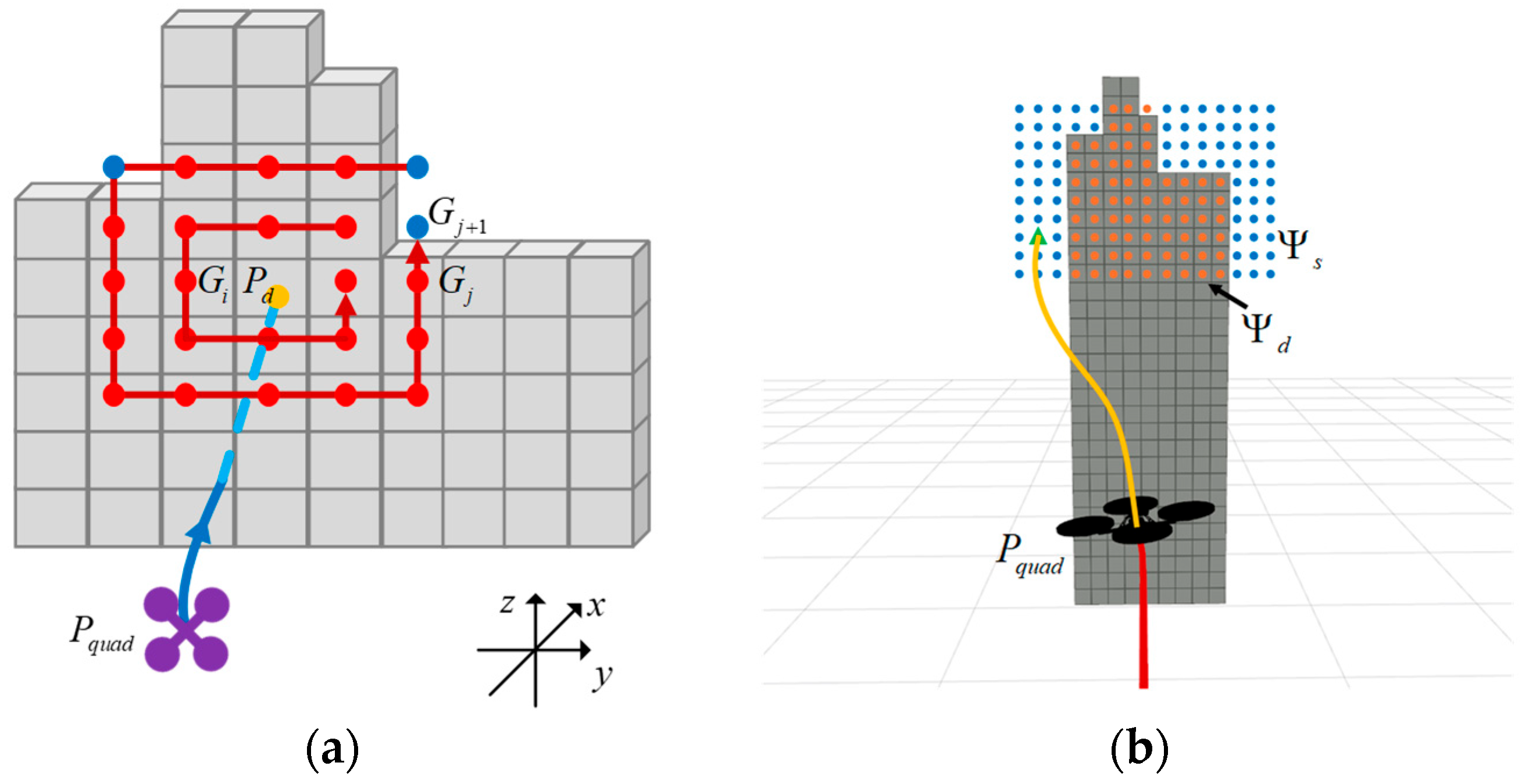
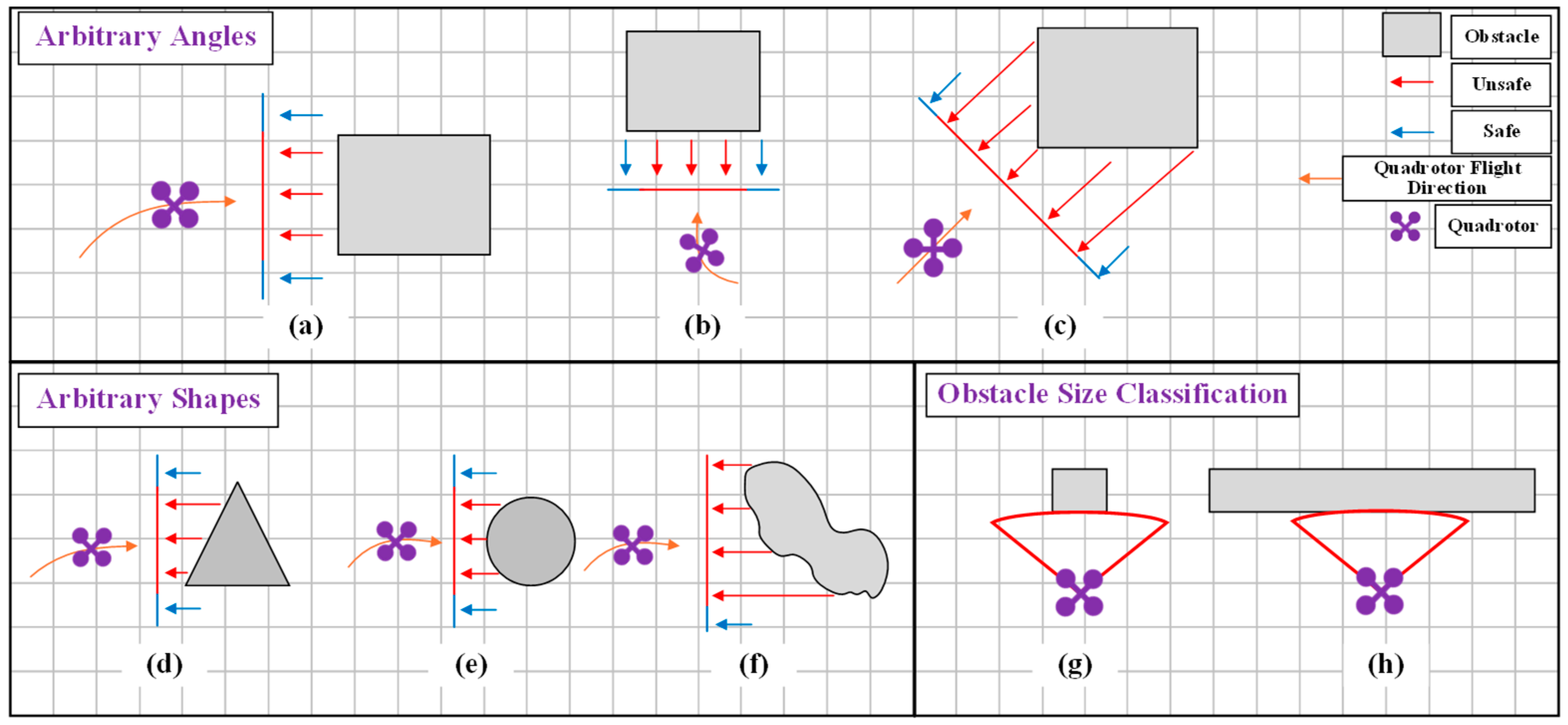

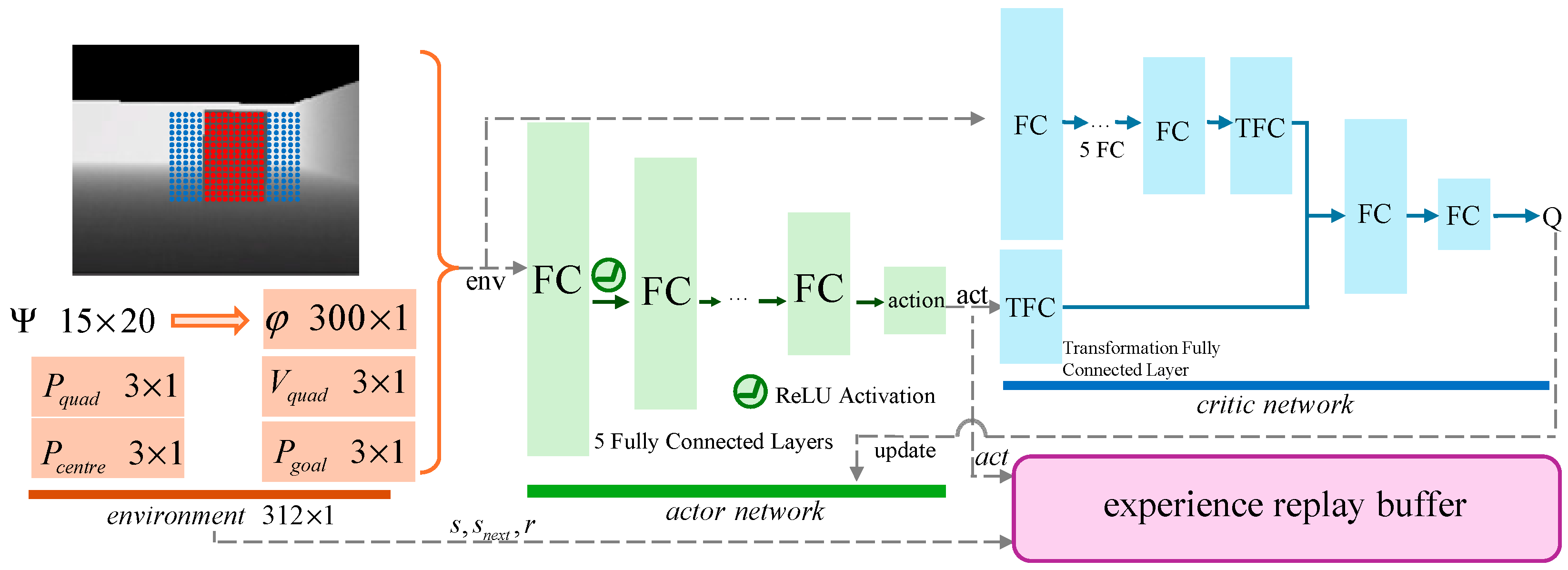

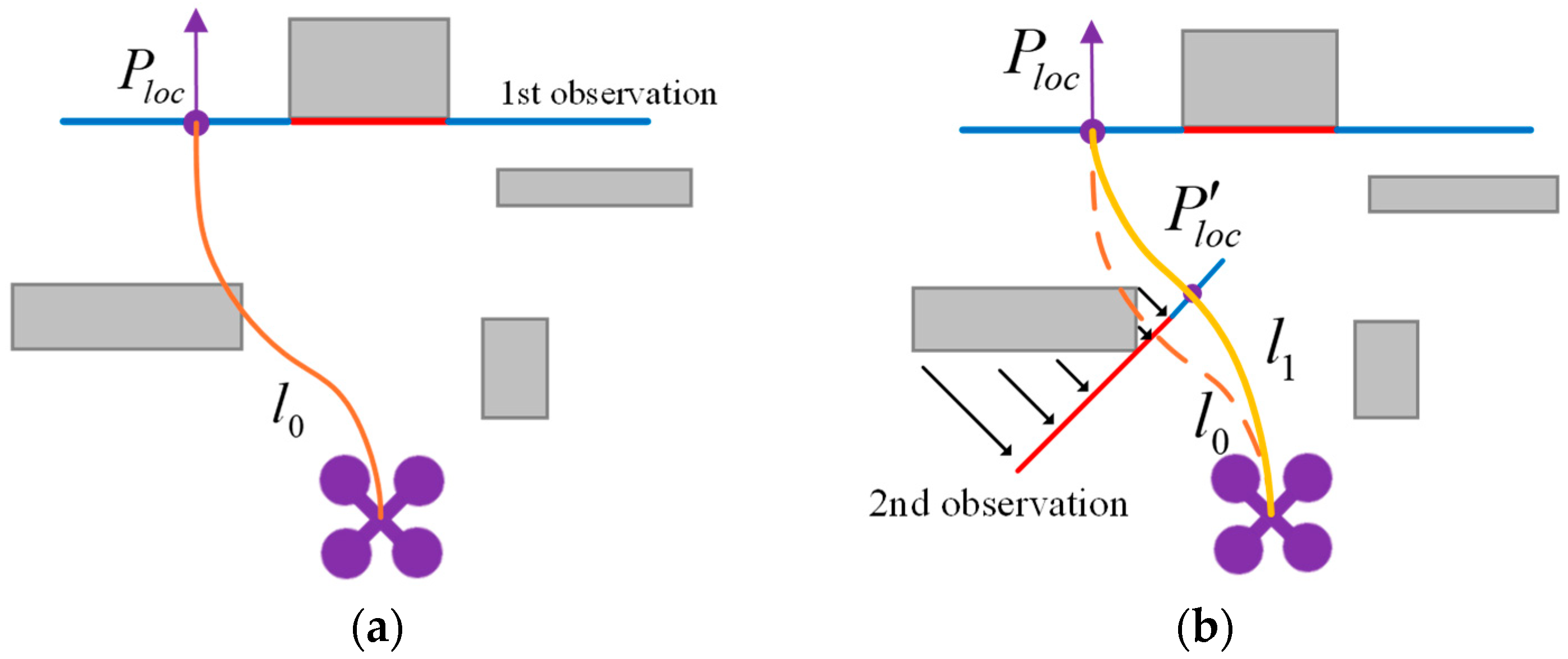
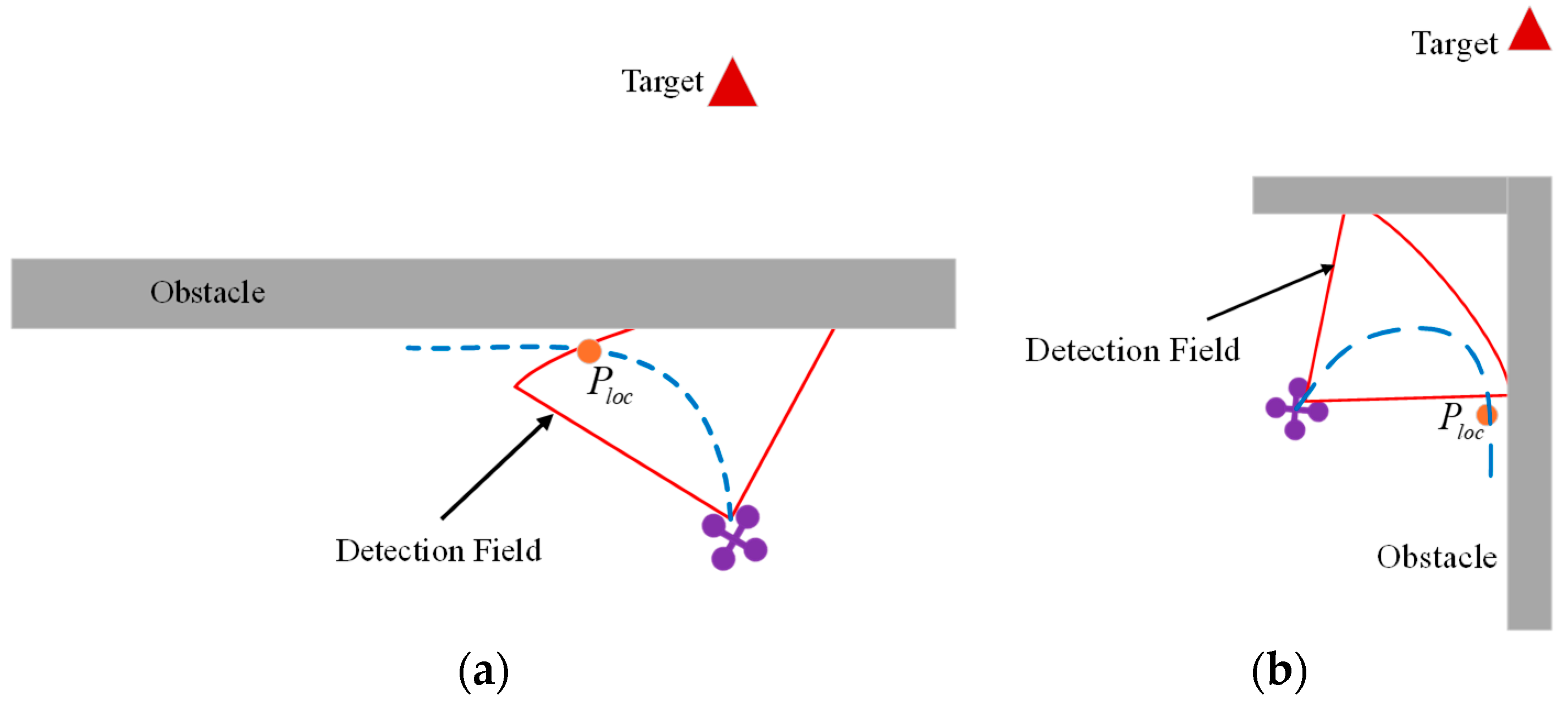

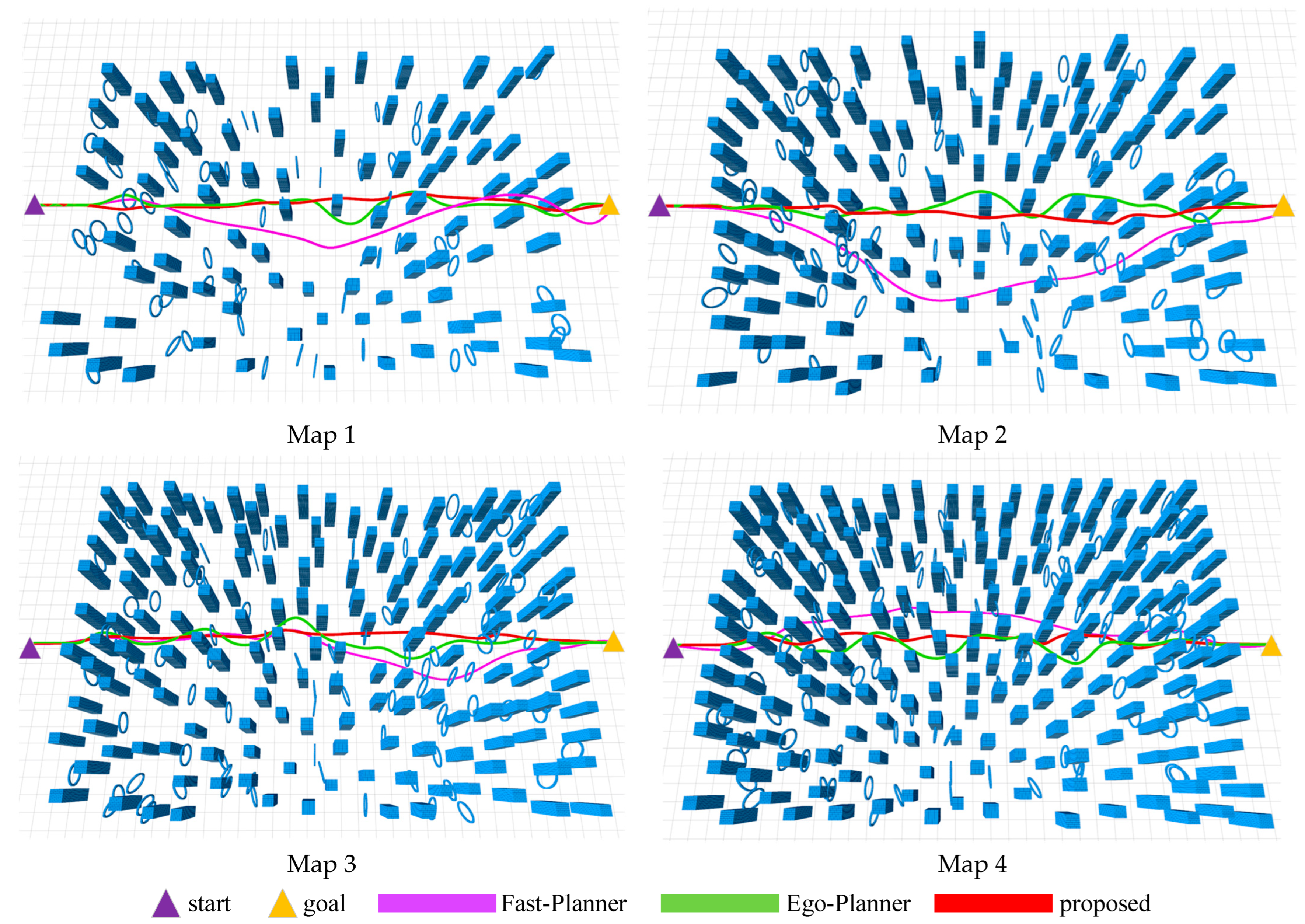
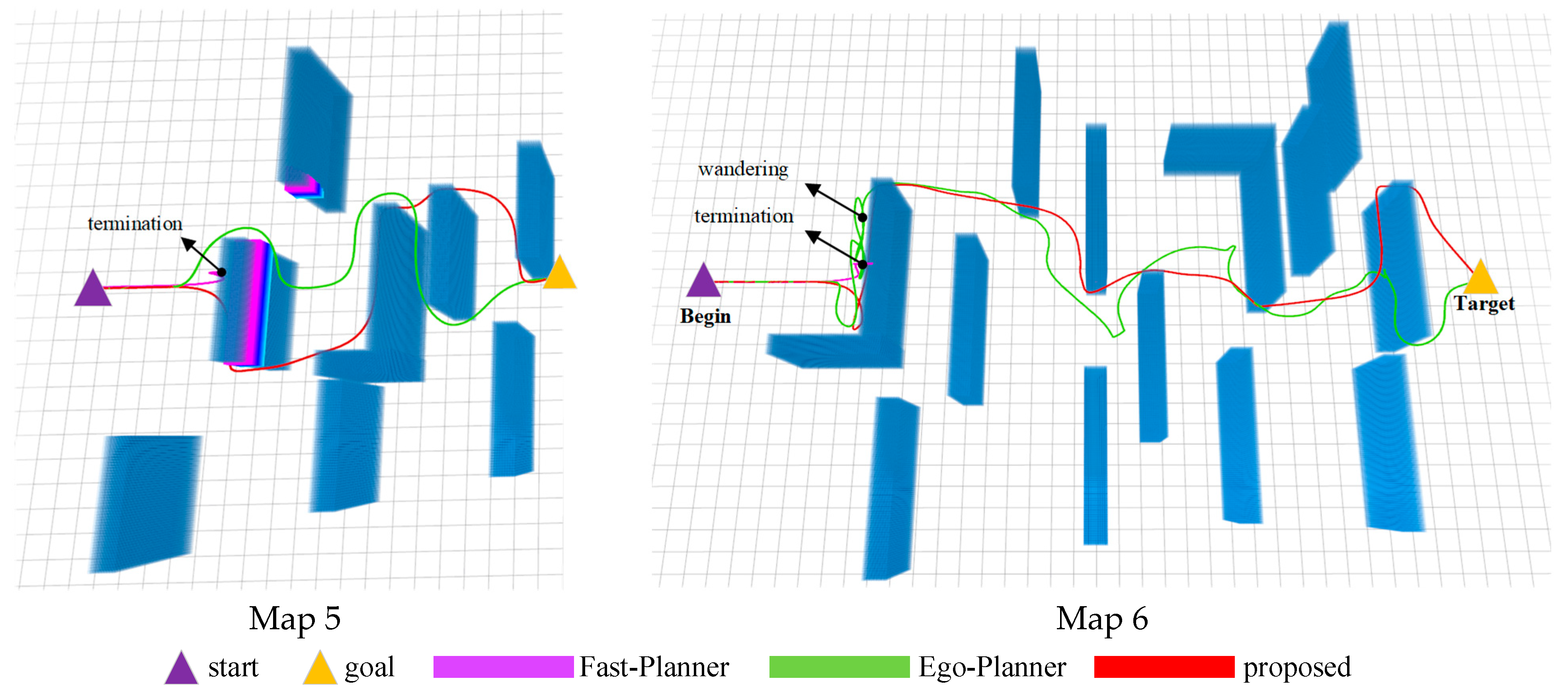

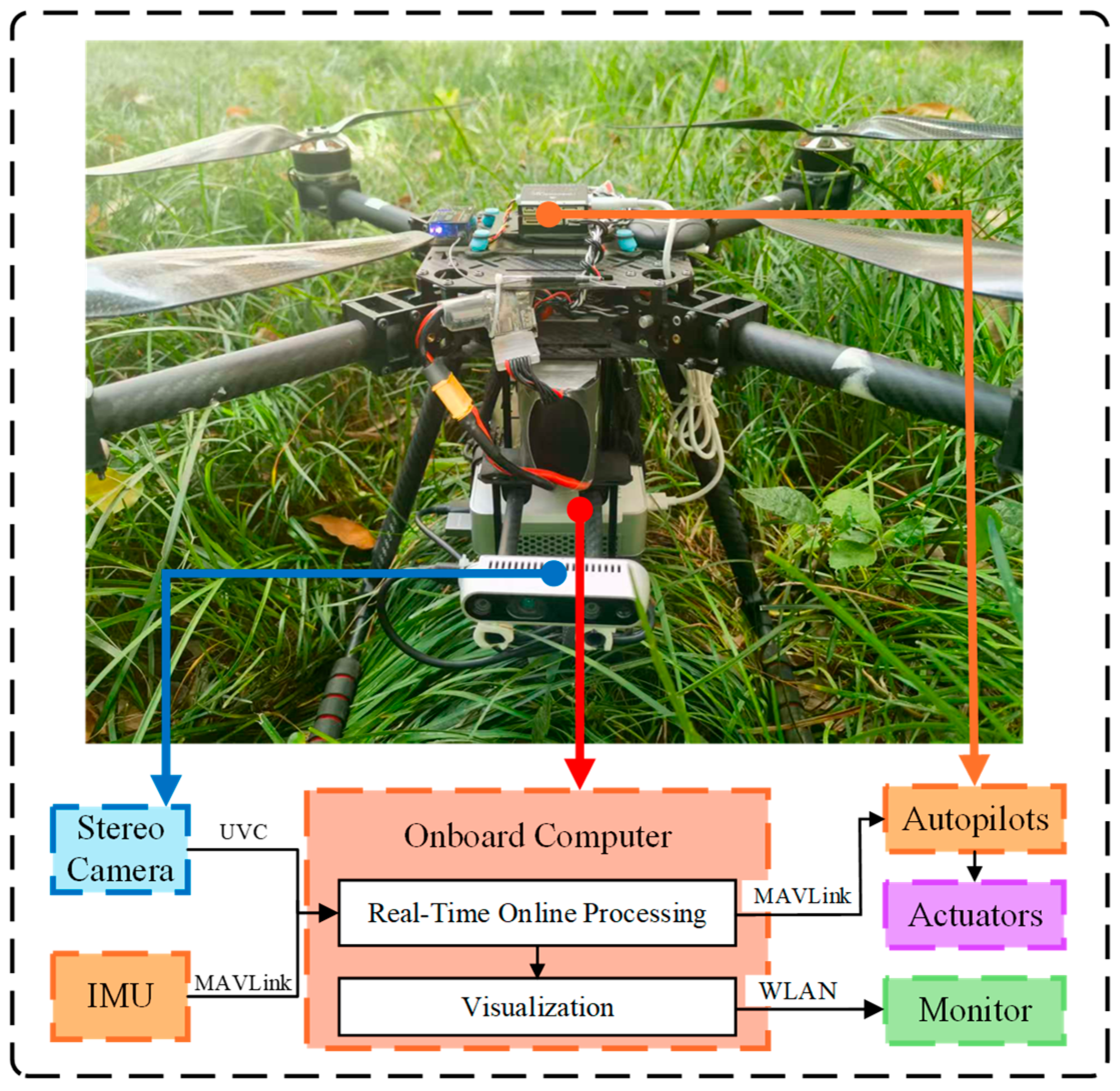
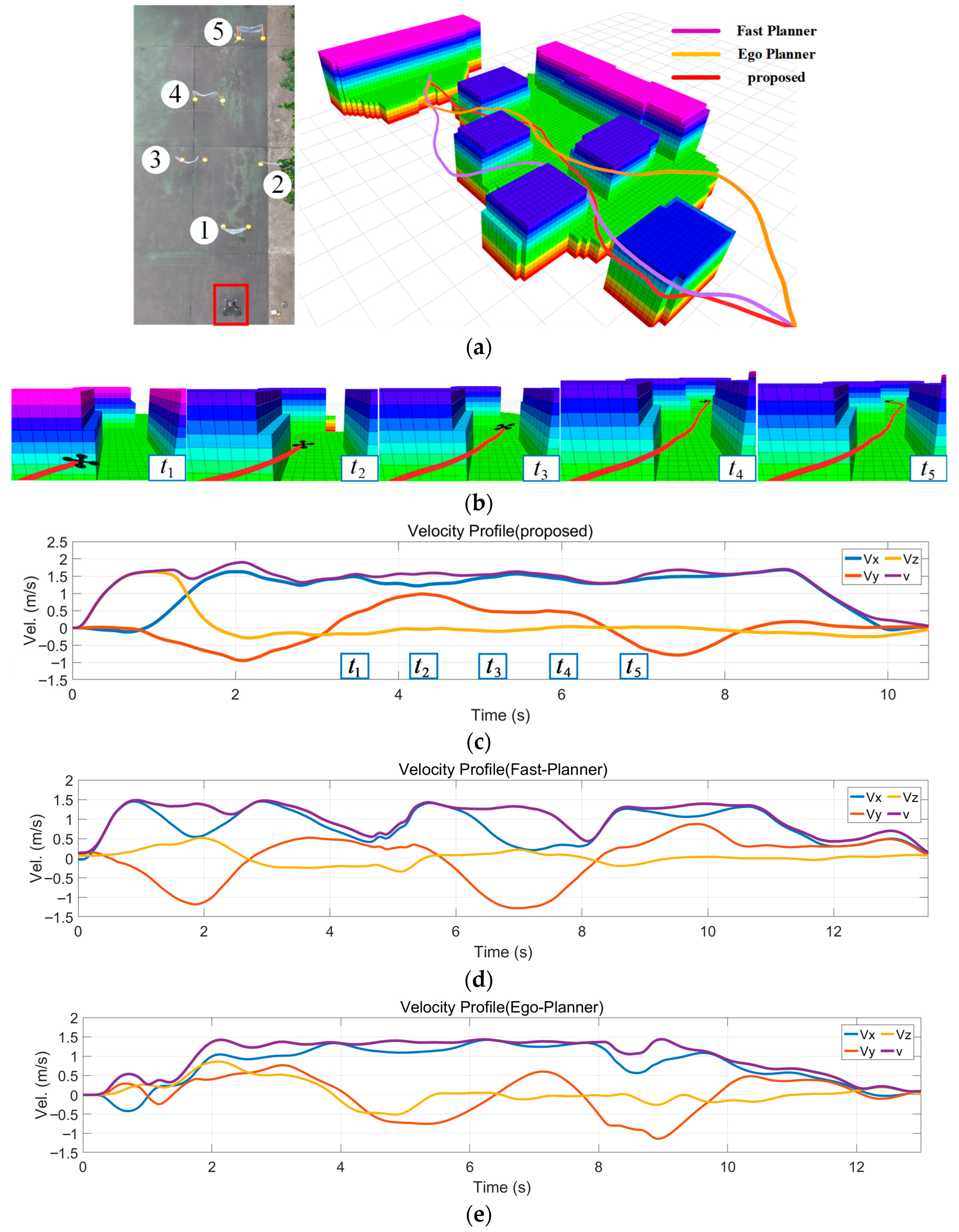
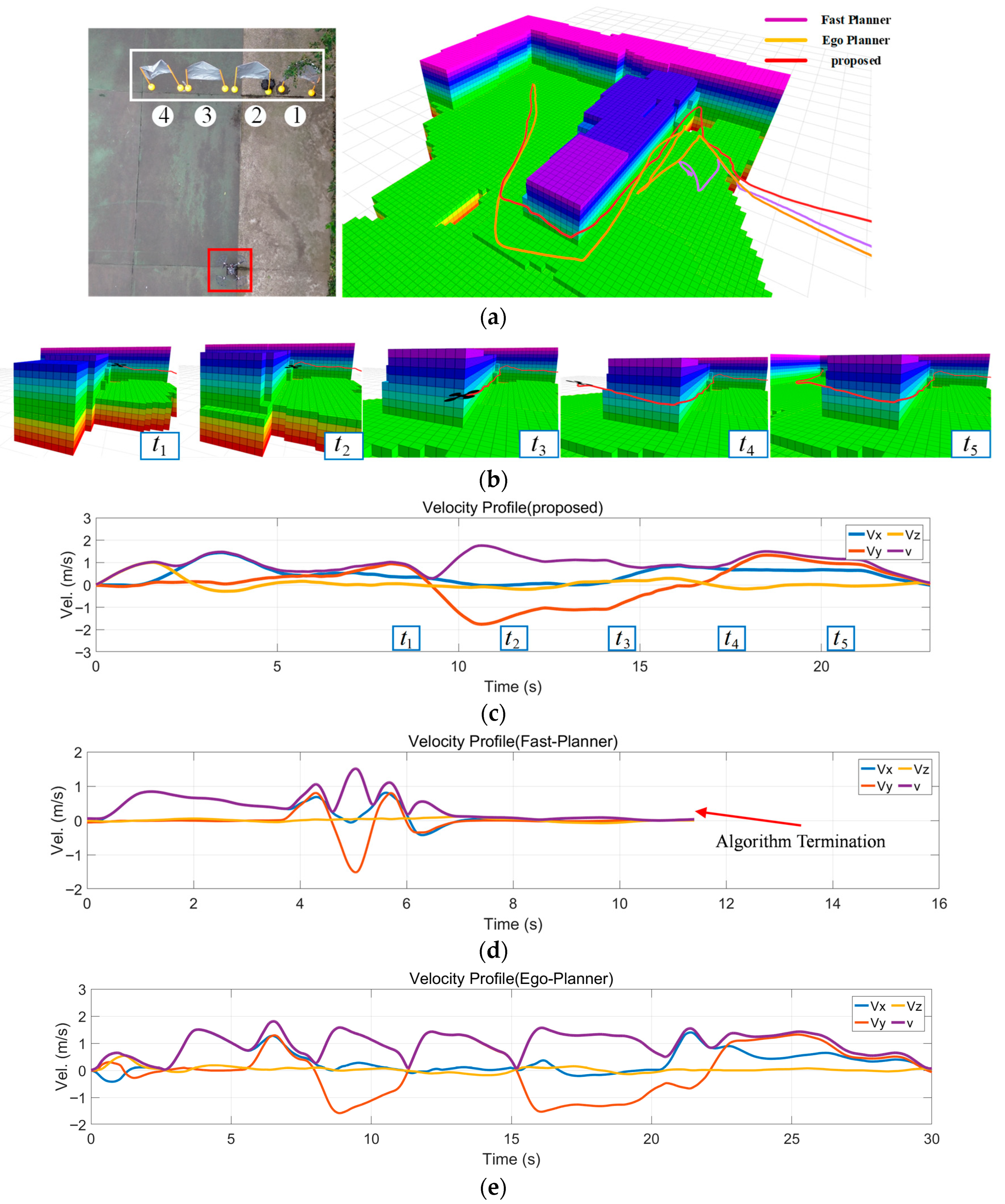
| Scenarios | Map | Method | Success Rate (%) | (%) | (m) | (s) | (m/s) | () |
|---|---|---|---|---|---|---|---|---|
| high-density obstacle scenarios | map 1 | Fast-Planner | 98 | 93 | 0.25 | 25.22 | 1.62 | 82.31 |
| Ego-Planner | 98 | 95 | 0.32 | 23.67 | 1.69 | 106.52 | ||
| proposed | 99 | 98 | 0.28 | 22.52 | 1.72 | 84.28 | ||
| map 2 | Fast-Planner | 95 | 89 | 0.24 | 26.85 | 1.59 | 83.72 | |
| Ego-Planner | 93 | 95 | 0.23 | 23.49 | 1.63 | 123.35 | ||
| proposed | 96 | 96 | 0.19 | 23.42 | 1.69 | 98.66 | ||
| map 3 | Fast-Planner | 90 | 90 | 0.22 | 27.95 | 1.51 | 103.71 | |
| Ego-Planner | 91 | 92 | 0.28 | 26.05 | 1.59 | 164.62 | ||
| proposed | 92 | 95 | 0.25 | 24.68 | 1.62 | 92.32 | ||
| map 4 | Fast-Planner | 86 | 89 | 0.18 | 30.01 | 1.41 | 102.81 | |
| Ego-Planner | 89 | 91 | 0.23 | 28.80 | 1.45 | 193.55 | ||
| proposed | 91 | 92 | 0.20 | 25.82 | 1.60 | 126.16 | ||
| large-sized obstacle scenarios | map 5 | Fast-Planner | \ | \ | \ | \ | \ | \ |
| Ego-Planner | 69 | 51 | 0.23 | 42.98 | 1.03 | 556.31 | ||
| proposed | 85 | 68 | 0.21 | 28.01 | 1.22 | 398.26 | ||
| map 6 | Fast-Planner | \ | \ | \ | \ | \ | \ | |
| Ego-Planner | 55 | 42 | 0.20 | 92.31 | 0.98 | 1021.72 | ||
| proposed | 82 | 63 | 0.19 | 51.19 | 1.18 | 521.29 |
| Scenarios | Method | (s) | (m) | (m) | () | (m/s) | (m/s) |
|---|---|---|---|---|---|---|---|
| high-density obstacle scenarios | Fast-Planner | 13.02 | 16.65 | 0.21 | 60.92 | 1.28 | 1.50 |
| Ego-Planner | 12.61 | 16.52 | 0.32 | 156.31 | 1.33 | 1.51 | |
| proposed | 10.21 | 15.32 | 0.22 | 128.51 | 1.50 | 1.89 | |
| large-sized obstacle scenarios | Fast-Planner | \ | \ | \ | \ | \ | \ |
| Ego-Planner | 29.81 | 28.32 | 0.20 | 265.32 | 0.95 | 1.79 | |
| proposed | 22.96 | 22.50 | 0.15 | 195.02 | 0.98 | 1.81 |
Disclaimer/Publisher’s Note: The statements, opinions and data contained in all publications are solely those of the individual author(s) and contributor(s) and not of MDPI and/or the editor(s). MDPI and/or the editor(s) disclaim responsibility for any injury to people or property resulting from any ideas, methods, instructions or products referred to in the content. |
© 2025 by the authors. Licensee MDPI, Basel, Switzerland. This article is an open access article distributed under the terms and conditions of the Creative Commons Attribution (CC BY) license (https://creativecommons.org/licenses/by/4.0/).
Share and Cite
Chen, J.; Liu, X.; Sheng, G.; Shao, Q.; Zhao, B. A General Path Planning Algorithm with Soft Constraints for UAVs in High-Density and Large-Sized Obstacle Scenarios. Drones 2025, 9, 793. https://doi.org/10.3390/drones9110793
Chen J, Liu X, Sheng G, Shao Q, Zhao B. A General Path Planning Algorithm with Soft Constraints for UAVs in High-Density and Large-Sized Obstacle Scenarios. Drones. 2025; 9(11):793. https://doi.org/10.3390/drones9110793
Chicago/Turabian StyleChen, Jinjie, Xixiang Liu, Guangrun Sheng, Qiantong Shao, and Bingquan Zhao. 2025. "A General Path Planning Algorithm with Soft Constraints for UAVs in High-Density and Large-Sized Obstacle Scenarios" Drones 9, no. 11: 793. https://doi.org/10.3390/drones9110793
APA StyleChen, J., Liu, X., Sheng, G., Shao, Q., & Zhao, B. (2025). A General Path Planning Algorithm with Soft Constraints for UAVs in High-Density and Large-Sized Obstacle Scenarios. Drones, 9(11), 793. https://doi.org/10.3390/drones9110793






